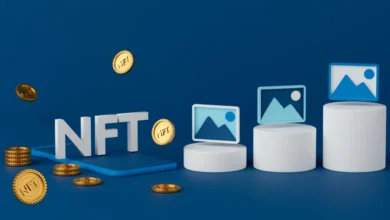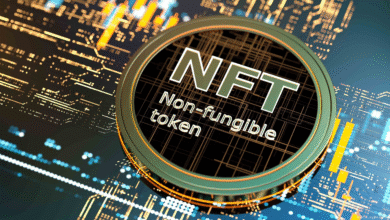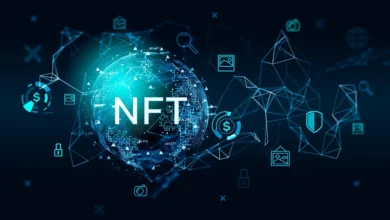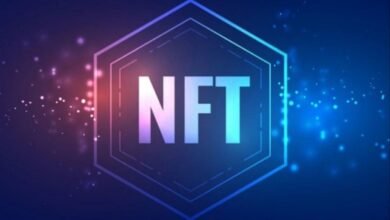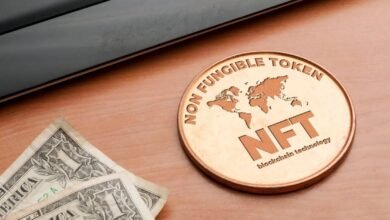
Cryptocurrency landscape has experienced a remarkable turnaround as both NFT and memecoin markets demonstrate robust recovery signals following an extended period of declining valuations and subdued trading activity. After weeks of bearish sentiment that gripped the broader digital asset ecosystem, these two volatile segments are now showing renewed vigour, capturing the attention of traders, investors, and market analysts worldwide. This resurgence comes at a critical juncture when many industry participants had begun questioning the long-term viability of these asset classes, particularly as regulatory scrutiny intensified and macroeconomic headwinds continued to challenge risk-on assets.
The recent downturn had tested the resolve of even the most committed participants in the crypto market, with many questioning whether the euphoric periods of 2021 and early 2022 would ever return. However, the current recovery phase suggests that reports of the demise of NFTs and memecoins may have been greatly exaggerated. Understanding the factors driving this comeback, the key metrics indicating genuine momentum versus speculative froth, and the sustainability of these trends requires a comprehensive examination of market dynamics, technological developments, and shifting investor psychology.
The Recent Crypto Market Downturn
The month-long slump that preceded this recovery was characterised by multiple interconnected factors that created a perfect storm of negative sentiment across digital asset markets. Bitcoin, the bellwether of the cryptocurrency sector, experienced significant price corrections that inevitably cascaded down to alternative assets, including non-fungible tokens and community-driven meme-based cryptocurrencies. This correlation, while well-documented in previous market cycles, was particularly pronounced during this recent downturn.
Several macroeconomic pressures contributed to the sustained bearish momentum. Traditional financial markets faced their own challenges, with persistent inflation concerns, central bank policy uncertainties, and geopolitical tensions creating an environment where investors gravitated toward perceived safe-haven assets rather than speculative ventures. The blockchain technology sector, despite its innovative promise, could not escape these broader market forces that compelled portfolio rebalancing across institutional and retail participant segments alike.
Additionally, regulatory developments in major jurisdictions added layers of uncertainty that weighed heavily on market sentiment. Enforcement actions, proposed legislation targeting digital assets, and increased scrutiny of decentralised finance platforms created headwinds that particularly affected assets perceived as having limited utility beyond speculative trading. NFT projects and memecoins, often criticised for lacking fundamental value propositions, bore the brunt of this scepticism as liquidity dried up and trading volumes plummeted to multi-month lows.
NFT Market Recovery: Key Indicators and Metrics
The NFT marketplace has emerged from its dormancy with several compelling indicators suggesting a genuine recovery rather than a temporary dead cat bounce. Trading volumes across major platforms have registered substantial increases, with some marketplaces reporting double-digit percentage gains in weekly transaction counts. This uptick in activity extends beyond merely high-profile collections, indicating broader market participation rather than isolated enthusiasm for specific blue-chip projects.
Floor prices for established NFT collections have demonstrated resilience and upward momentum, with several prominent projects reclaiming price levels not seen since the early stages of the downturn. This price recovery has been accompanied by increased wallet activity, with both new entrants and dormant holders returning to participate in secondary markets. The revival of interest spans multiple categories, from digital art and collectibles to gaming assets and virtual real estate, suggesting that the recovery is not confined to a single niche but represents a broader reawakening of the NFT ecosystem.
Driving Forces Behind NFT Revival
Several catalysts have contributed to the renewed vitality in NFT markets. Technological improvements in blockchain infrastructure have addressed some of the scalability and cost concerns that previously hindered mainstream adoption. Layer-2 solutions and more efficient consensus mechanisms have reduced transaction fees, making it economically viable for participants to engage with NFTs without prohibitive gas costs eating into potential profits or creating barriers to entry.
Furthermore, the integration of NFTs into gaming ecosystems and entertainment platforms has provided tangible utility that extends beyond mere speculation. Major gaming studios and entertainment companies have announced partnerships and initiatives incorporating blockchain-based assets, lending legitimacy to the technology and creating use cases that resonate with broader audiences. This shift toward utility-driven NFTs represents a maturation of the market, moving away from purely speculative dynamics toward sustainable economic models.
The emergence of innovative royalty structures and creator monetisation mechanisms has also reinvigorated interest from artists and content creators who view NFTs as viable channels for direct audience engagement and revenue generation. These developments have attracted fresh capital and creative talent to the space, enriching the ecosystem with diverse offerings that appeal to varied collector preferences and investment strategies.
Memecoin Market Momentum: From Ridicule to Resurgence
The memecoin sector, often dismissed by traditional analysts as the epitome of irrational exuberance, has staged an equally impressive comeback that challenges conventional wisdom about cryptocurrency valuation. Tokens that had lost substantial market capitalisation during the slump have experienced explosive rallies, with some recording triple-digit percentage gains within compressed timeframes. This resurgence has reignited debates about the nature of value in digital assets and the power of community-driven momentum in decentralised markets.
Unlike previous memecoin rallies that were primarily characterised by retail FOMO and social media hype, the current recovery phase exhibits some notable differences. Increased sophistication among participants, improved market infrastructure, and the evolution of memecoins beyond pure speculation toward developing ecosystems with decentralised applications and governance mechanisms have contributed to what some observers characterise as a more mature iteration of the memecoin phenomenon.
Community Engagement and Social Sentiment
The revival of memecoin markets has been intrinsically linked to renewed community engagement across social media platforms and dedicated forums. The social dynamics that underpin memecoin valuations have intensified, with influential voices and coordinated community actions driving attention and liquidity to specific tokens. This grassroots enthusiasm, while potentially volatile, represents genuine market forces that cannot be easily dismissed as irrational when they consistently drive measurable economic activity.
Platform developments on Twitter, Reddit, and dedicated Discord communities have facilitated more organised collective action, with participants leveraging sophisticated coordination techniques that blur the lines between investment clubs and internet communities. This evolution in community organisation has created more resilient support levels for memecoin prices, as coordinated buying and holding strategies replace the purely speculative pump-and-dump patterns that characterised earlier iterations.
The philosophical underpinnings of memecoin culture have also evolved, with many participants framing their involvement as cultural participation and community membership rather than purely financial speculation. This identity-driven attachment to specific tokens creates stickier holder bases that provide price stability during market turbulence, contributing to the observed recovery patterns.
Technical Analysis and Market Structure Improvements
From a technical perspective, the recovery in both NFT and memecoin markets exhibits characteristics that suggest sustainable momentum rather than ephemeral rallies. Chart patterns across multiple tokens and collections show healthy consolidation phases preceding breakouts, indicating genuine accumulation by informed participants rather than artificial price manipulation. Volume profiles support the authenticity of recent price movements, with increasing participation breadth suggesting that rallies are not merely driven by small groups of large holders.
Market infrastructure improvements have played a crucial supporting role in facilitating this recovery. Enhanced liquidity provision through automated market makers, improved oracle systems providing reliable price feeds, and the maturation of lending protocols that accept NFTs and certain memecoins as collateral have all contributed to more efficient price discovery mechanisms. These structural enhancements reduce friction in trading processes and enable more sophisticated investment strategies that were previously unavailable or prohibitively risky.
The development of derivatives markets and prediction platforms focused on NFT and memecoin price movements has also added depth to the ecosystem, allowing participants to express nuanced views and hedge exposure in ways that support overall market stability. This financial infrastructure maturation represents a significant evolution from the speculative free-for-all that characterised earlier market cycles.
Institutional Interest and Mainstream Adoption
Perhaps most intriguingly, the current recovery phase has coincided with subtle but meaningful increases in institutional interest in both NFT and memecoin markets. While major financial institutions remain cautious about direct exposure to the most volatile segments of the crypto market, specialised funds and family offices have begun allocating capital to curated NFT collections and select memecoin positions as part of diversified alternative asset strategies.
This institutional involvement, while still relatively modest, provides validation and liquidity that contribute to market stability. Professional investors bring sophisticated risk management frameworks, fundamental analysis methodologies, and longer time horizons that counterbalance some of the speculative excess that can characterise retail-dominated markets. The presence of institutional capital also attracts improved custody solutions, insurance products, and compliance frameworks that reduce operational risks for all market participants.
Corporate adoption of NFT technology for loyalty programs, digital identity verification, and supply chain management has also accelerated, creating genuine business use cases that extend far beyond the speculative art market. These practical applications demonstrate the versatility of blockchain-based tokens and provide fundamental support for NFT valuations that were previously lacking during periods when speculation drove market dynamics almost exclusively.
Regulatory Landscape and Market Outlook
The regulatory environment surrounding NFTs and memecoins remains fluid, with policymakers worldwide grappling with how to classify, oversee, and tax these novel asset classes. Recent recovery in market conditions has occurred despite, rather than because of, regulatory clarity, suggesting resilience in market demand that transcends policy uncertainties. However, eventual regulatory frameworks will undoubtedly shape the long-term trajectory of these markets.
Forward-looking participants are increasingly focused on compliance and regulatory preparedness, with many projects proactively implementing KYC procedures, transparent governance structures, and legal entity formations designed to navigate evolving regulatory requirements. This maturation process, while potentially reducing some of the wild west appeal that initially attracted certain participants, positions these markets for sustainable growth and mainstream acceptance.
Market analysts remain divided on whether the current recovery represents the beginning of a sustained bull market or merely a relief rally within a longer-term consolidation period. Technical indicators provide mixed signals, with some suggesting strong upward momentum while others warn of overhead resistance levels and potential exhaustion patterns. Fundamental factors, including adoption rates, technological development progress, and macroeconomic conditions, will ultimately determine whether recent gains can be maintained and extended.
Risk Factors and Market Volatility Considerations
Despite the encouraging recovery signals, participants in NFT and memecoin markets must remain cognizant of the inherent risks that characterise these asset classes. Extreme volatility remains a defining feature, with prices capable of swinging dramatically within short timeframes based on sentiment shifts, influential social media posts, or technical factors unrelated to fundamental value. This volatility, while creating opportunities for substantial gains, also exposes participants to significant downside risks that can result in rapid capital erosion.
The concentration of holdings within NFT collections and memecoin supplies represents another structural risk factor. Large holders, colloquially known as “whales,” possess disproportionate influence over price dynamics and can trigger cascading liquidations or rallies through their trading decisions. This concentration creates fragility in market structure that makes these assets particularly susceptible to manipulation and sudden sentiment reversals.
Technological risks, including smart contract vulnerabilities, platform hacks, and blockchain congestion, continue to pose threats to market participants. Despite improvements in security practices and audit procedures, the relatively nascent state of blockchain technology means that participants must maintain vigilance and implement robust security practices to protect their holdings from technical failures or malicious attacks.
Conclusion
The recovery of NFT and memecoin markets following an extended period of declining valuations represents a significant development in the broader cryptocurrency ecosystem. Multiple factors have contributed to this turnaround, including technological improvements, increased utility, renewed community engagement, and gradual institutional adoption. While sceptics remain unconvinced about the long-term value proposition of these assets, market data clearly indicate renewed interest and capital flows that have reversed previous downward trajectories.
The sustainability of this recovery will depend on continued innovation, regulatory developments, macroeconomic conditions, and the ability of projects to deliver genuine utility that extends beyond speculation. Participants should approach these markets with appropriate risk awareness, recognising both the opportunities and dangers inherent in highly volatile asset classes. As the cryptocurrency market continues to mature, NFTs and memecoins will likely occupy enduring, if controversial, positions within the broader digital asset landscape, rewarding those who navigate their complexities with appropriate sophistication and caution.
FAQs
Q: What caused the month-long crypto slump that affected NFT and memecoin markets?
The extended downturn resulted from multiple interconnected factors, including Bitcoin price corrections, macroeconomic pressures such as inflation concerns and central bank policy uncertainties, increased regulatory scrutiny, and broader risk-off sentiment across financial markets. These factors combined to suppress liquidity and dampen investor enthusiasm across speculative cryptocurrency segments.
Q: Are NFTs still worth investing in after the recent market recovery?
Whether NFTs represent worthwhile investments depends on individual risk tolerance, investment objectives, and market understanding. The recent recovery has been accompanied by increased utility and institutional interest, suggesting potential for sustained growth. However, extreme volatility and speculative dynamics remain defining characteristics that require careful consideration and thorough due diligence before committing capital.
Q: How do memecoins differ from other cryptocurrencies in terms of value proposition?
Memecoins typically lack the technical innovation or utility focus that characterises projects like Ethereum or Solana. Their value derives primarily from community engagement, social sentiment, and speculative momentum rather than technological capabilities or business use cases. This fundamental difference creates distinct risk-return profiles that attract participants seeking high-risk, high-reward opportunities driven by cultural phenomena rather than traditional financial metrics.
Q: What indicators should investors watch to assess the sustainability of this market recovery?
Key indicators include sustained increases in trading volume across multiple platforms, broadening participation beyond a few high-profile collections or tokens, development activity within projects, institutional allocation trends, regulatory developments, and correlation with broader cryptocurrency market movements. Additionally, monitoring wallet activity, floor price stability for NFT collections, and holder concentration metrics provides insight into market health and recovery sustainability.
Q: How has blockchain technology improved to support NFT and memecoin market growth?
Recent technological advancements include layer-2 scaling solutions that reduce transaction costs, improved consensus mechanisms enhancing network efficiency, better wallet interfaces simplifying user experience, enhanced security protocols protecting against exploits, and cross-chain interoperability allowing assets to move between different blockchain ecosystems. These improvements have addressed many technical barriers that previously limited mainstream adoption and market participation.


